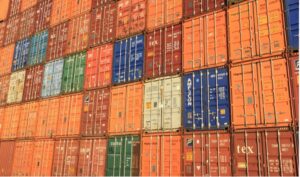Understanding the Journey: From China’s Shores to American Docks
Shipping goods from China to the USA is a cornerstone of global trade. For businesses, navigating the logistics of this transpacific journey can seem daunting. A crucial element is understanding the timeframe involved. This guide delves into the average time for cargo ships to travel from China to the USA, explores the factors impacting transit times, and equips you with strategies to optimize your shipping experience.
Understanding the Time Differences Between China and USA

Before diving into specifics, it’s important to acknowledge the time zone difference between China (UTC+8) and the USA (UTC-4 to UTC-8). This can impact communication and coordination during the shipping process. Be mindful of this time gap when planning and communicating with your Chinese partners.
Factors Affecting the Time of Cargo Shipments
Several factors influence the time it takes for your cargo to reach the USA from China:
- Origin and Destination Ports: The specific ports in China and the USA you choose significantly impact transit times. West Coast ports in the USA generally experience shorter travel times compared to East Coast ports due to distance.
- Chosen Shipping Method: There are two primary methods for shipping cargo by sea:
- Ocean Freight (Full Container Load – FCL): This is the most cost-effective option for large shipments, typically taking 15-35 days depending on the route.
- Less Than Container Load (LCL): Ideal for smaller shipments, LCL involves consolidating your cargo with others, leading to longer transit times (up to 45 days) due to additional handling and consolidation processes.
- Route and Congestion: Shipping routes can vary depending on the chosen carrier and current global trade conditions. Congestion at ports, especially during peak seasons, can significantly extend transit times.
- Customs Clearance: The time it takes for customs officials to clear your cargo upon arrival in the USA can significantly impact delivery. Proper documentation and adherence to customs regulations expedite this process.
- Weather Conditions: Severe weather events like storms or typhoons can disrupt shipping schedules and cause delays.
Calculating Transit Times for Cargo Shipments

While pinpointing an exact arrival date can be challenging, you can estimate transit times using online tools provided by shipping companies. These tools consider factors like origin and destination ports, chosen shipping method, and historical transit data. Remember, these are estimates, and unforeseen circumstances can cause deviations.
Strategies for Managing and Optimizing Shipping Time
Here are some strategies to manage and potentially optimize shipping times:
- Plan Ahead: Book your shipment well in advance, especially during peak seasons when demand for container space is high.
- Consolidate Shipments: If you have smaller shipments, consider consolidating them into one FCL container to reduce handling and potentially shorten transit times.
- Choose the Right Shipping Method: Evaluate the urgency of your shipment and balance cost-effectiveness with speed when selecting FCL or LCL.
- Work with a Reputable Freight Forwarder: A reliable freight forwarder can navigate complexities like customs clearance and optimize routes, potentially reducing transit times.
- Stay Informed: Track your shipment closely and maintain open communication with your freight forwarder and any relevant parties throughout the journey.
Navigating Customs and Clearance Procedures

Efficient customs clearance is crucial for timely delivery. Ensure you have all the necessary documentation in order, including commercial invoices, packing lists, and certificates of origin. Working with a customs broker can help navigate the process and expedite clearance.
Tips for Efficient Cargo Handling and Tracking
- Proper Packing: Ensure your cargo is securely packed to withstand the rigors of ocean travel. Use proper packaging materials and adhere to weight restrictions.
- Clear Labeling: Clearly label all packages with complete and accurate information including contents, weight, and destination.
- Real-time Tracking: Most shipping companies offer real-time tracking tools allowing you to monitor your shipment’s progress throughout the journey.
Choosing the Right Shipping Method for Your Cargo
The ideal shipping method depends on several factors, including:
time for cargo ship from china to usa
- Size and Weight of Your Cargo: FCL is the most cost-effective option for large shipments, while LCL is suitable for smaller ones.
- Urgency of Delivery: If speed is paramount, Air Freight might be a viable alternative, although it comes at a higher cost.
- Budget: Ocean Freight (FCL) is generally the most cost-effective option, followed by LCL. Air Freight is the most expensive option.





